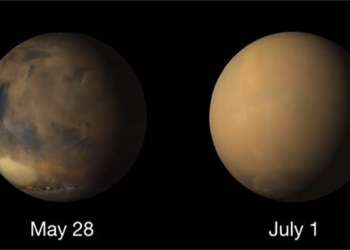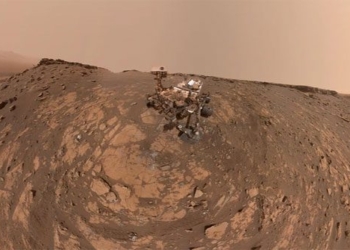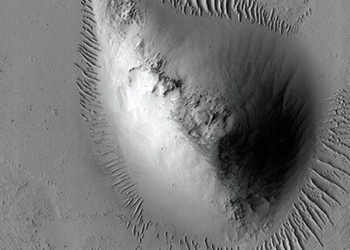The objects in the NASA photograph of the Martian surface—round structures that some believe to be low-level organisms while others consider them to be rocks—may actually be hydrohematite.
A new study led by the Smithsonian Institution (Germany) and Pennsylvania State University (USA) suggests that the round formations on Mars could be hydrohematite, a substance first identified by German mineralogist August Breithaupt in 1843, right here on Earth.
According to Daily Mail, this type of rock is a form of hydrated iron mineral, and it is the iron that gives it its characteristic red color.
“Strange object” in NASA’s photo and a similar rock found right here on Earth – (Photo: Smithsonian Institution).
In this study, scientists reanalyzed old rock samples, employing infrared spectroscopy and X-ray diffraction to closely examine their components. They discovered that under alkaline conditions, water, and appropriate temperatures, hydrohematite can precipitate out, forming sediment layers.
These are precisely the conditions of ancient Mars, when the planet was not as dry as it is today. Considering the components in Martian soil collected by Curiosity—NASA’s rover that has been on Mars for several years—they believe that the round formations in NASA’s photo are indeed hydrohematite. The hydrohematite on Earth is thought to also form in situ, but because only a few areas on Earth have conditions suitable for this mineral as found on Mars, it is less common.
The abundant presence of this mineral also helps explain the planet’s characteristic red color. If it truly is hydrohematite, it would be great news for astronomers, as hydrohematite contains a significant amount of water, which could be a valuable resource for Mars bases, according to Space.
The photograph taken by NASA’s Curiosity rover has led to a series of speculations and studies. Most refer to it as “blueberry rock” because they believe it is a rock but shaped like a blueberry. However, many researchers also think it could be a Martian organism—a low-level life form similar to fungi on Earth, as they appear to change in various photos.





















































